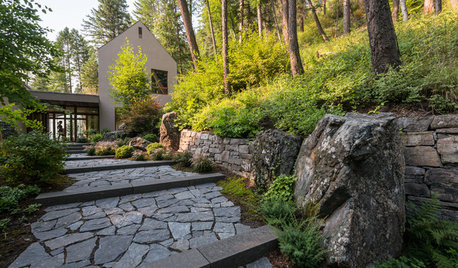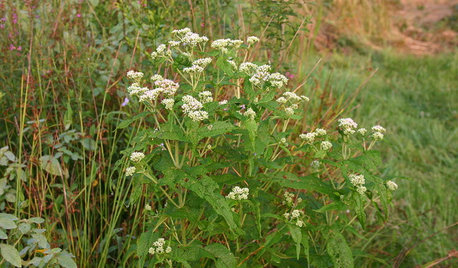Local Plants-Need help
clownhouse
13 years ago
Related Stories

LANDSCAPE DESIGNNative Plants Help You Find Your Garden Style
Imagine the garden of your dreams designed with plants indigenous to your region
Full Story
GARDENING GUIDES8 Unthirsty Plants Help You Save Water in Style
Spend less effort and money on your landscape with drought-tolerant and native plants that liven up your yard
Full Story
EARTH DAYHow to Help Your Town’s Beneficial Birds and Bugs
Make a habitat using local materials to provide a home to the creatures that help our gardens
Full Story
PETS6 Ways to Help Your Dog and Landscape Play Nicely Together
Keep your prized plantings intact and your dog happy too, with this wisdom from an expert gardener and dog guardian
Full Story
LIFEYou Said It: ‘Put It Back’ If It Won’t Help Your House, and More Wisdom
Highlights from the week include stopping clutter from getting past the door, fall planting ideas and a grandfather’s gift of love
Full Story
MATERIALSHow to Use Local Stone in Your Landscape Design
Locally sourced stone is a gorgeous and durable landscape building material
Full Story
DECORATING GUIDES10 Fresh-Brewed Ideas to Steal From Your Local Café
Bring elements of your favorite coffee shop into your home and make it a place you’ll want to relax in for hours
Full Story
GARDENING GUIDESGreat Design Plant: Ceanothus Pleases With Nectar and Fragrant Blooms
West Coast natives: The blue flowers of drought-tolerant ceanothus draw the eye and help support local wildlife too
Full Story
GARDENING GUIDESGreat Design Plant: Common Boneset Helps Good Bugs Thrive
Support bees, moths and butterflies with the nectar of this low-maintenance, versatile and tactile prairie-style plant
Full Story






maifleur01
rhizo_1 (North AL) zone 7
Related Professionals
Belmont Landscape Architects & Landscape Designers · Lyons Landscape Architects & Landscape Designers · Tomball Landscape Architects & Landscape Designers · Matthews Landscape Contractors · Brookline Landscape Contractors · El Mirage Landscape Contractors · Fairview Landscape Contractors · Fuquay-Varina Landscape Contractors · Medford Landscape Contractors · Shoreview Landscape Contractors · Waipahu Landscape Contractors · Wanaque Landscape Contractors · Casselberry Landscape Contractors · Chicago Driveway Installation & Maintenance · The Woodlands Driveway Installation & Maintenancemaifleur01
clownhouseOriginal Author
terryr
terrene
maifleur01
oregonwoodsmoke
terrene
maifleur01
terryr